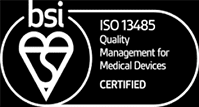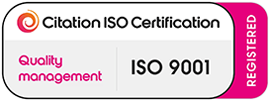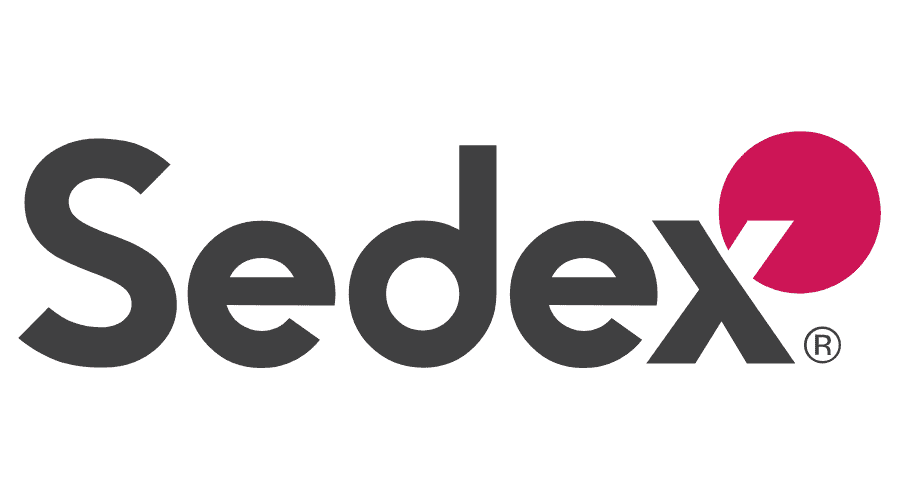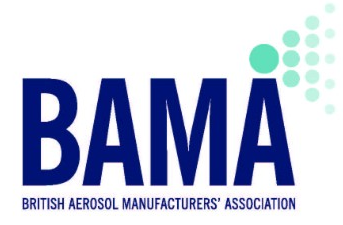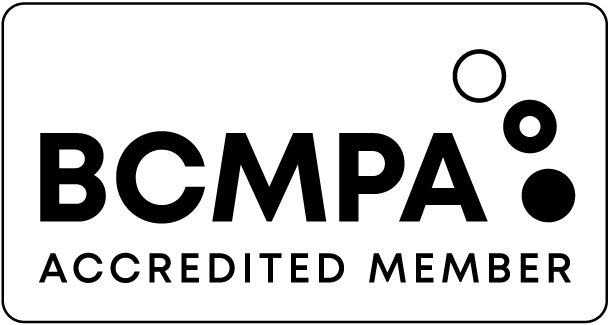In today’s health-conscious market, consumers and regulators are increasingly focused on safety, transparency, and clean labelling. One area where this shift is particularly evident is the demand for preservative-free formulations. Across personal care, healthcare, and pharmaceutical products, manufacturers are looking for ways to maintain safety and product integrity without relying on traditional preservatives. This is where Bag-on-Valve (BoV) technology offers a distinct advantage.
As a leader in aerosol manufacturing, Hydrokem provides advanced BoV filling solutions that enable brands to deliver preservative-free products without compromising on shelf life, safety, or performance. By using BoV, manufacturers can offer cleaner, safer, and more sustainable products while meeting consumer expectations and regulatory requirements.
What is Bag-on-Valve Technology?
Bag-on-Valve is an advanced aerosol packaging system in which the product is contained within a sealed bag inside the can. The bag is surrounded by compressed air or nitrogen, which acts as the propellant. When the valve is pressed, the product is dispensed through the valve while the propellant remains separate.
Unlike traditional aerosols, where the product and propellant share the same space, BoV ensures that the formulation never comes into direct contact with the propellant. This separation is particularly valuable for sensitive formulations, sterile products, and applications where product purity is essential.
Why Preservative-Free Formulations?
Preservatives have traditionally been used to prevent microbial growth and extend shelf life. However, growing consumer awareness and stricter regulations have put preservatives under scrutiny. In personal care and healthcare sectors, many preservatives are associated with potential sensitivities or regulatory restrictions.
Preservative-free formulations provide a cleaner label, reduce the risk of allergic reactions, and appeal to consumers who prefer products with minimal additives. In pharmaceutical applications, eliminating preservatives also improves safety for patients who may be sensitive to these substances.
The challenge for manufacturers is ensuring that products remain stable and safe without preservatives. BoV provides the solution.
How BoV Supports Preservative-Free Formulations
Bag-on-Valve technology addresses the key concerns of preservative-free products through its design and performance:
- Airtight Barrier: The sealed bag prevents external contamination, keeping the product sterile throughout its lifecycle.
- Controlled Dispensing: BoV allows one-way flow; once dispensed, air and bacteria cannot re-enter the bag.
- Extended Shelf Life: By maintaining product integrity, BoV helps products remain safe and effective without the need for chemical preservatives.
- Consistent Performance: The system dispenses nearly 100% of the product with a uniform spray, reducing waste and ensuring consistent quality.
- Compatibility with Sensitive Formulations: Since the product never touches the propellant, delicate or reactive formulations remain stable.
Key Benefits for Manufacturers and Consumers
- Clean Labelling & Consumer Trust
Preservative-free products resonate strongly with health-conscious consumers. BoV enables brands to market products as pure, safe, and free from unnecessary additives, boosting consumer trust and brand reputation. - Improved Safety
For patients and consumers sensitive to preservatives, BoV allows the safe use of products without risking irritation or allergic reactions. - Regulatory Compliance
Many regions are tightening rules on preservatives in cosmetics and pharmaceuticals. BoV helps companies meet these evolving requirements without reformulating around restricted ingredients. - Product Efficacy
Since the formulation remains uncontaminated and stable, preservative-free aerosols maintain their efficacy over time. This is particularly important in healthcare applications where product reliability is essential. - Sustainability and Efficiency
BoV delivers almost all of the product without waste, reducing environmental impact. Using compressed air or nitrogen as the propellant also makes the system more sustainable compared to traditional hydrocarbon propellants.
Hydrokem’s Expertise in BoV Filling for Preservative-Free Products
At Hydrokem, we specialise in developing and filling preservative-free formulations using BoV technology. Our facilities include cleanroom environments, validated filling lines, and full traceability systems to ensure product safety and compliance.
We work with clients in healthcare, pharmaceuticals, personal care, veterinary products, and beyond to create tailored preservative-free solutions. Whether it is a sterile wound spray, a skin care product, or a pharmaceutical aerosol, Hydrokem provides the expertise and facilities to deliver safe, compliant, and market-ready products.
If you are looking to develop preservative-free formulations that meet consumer demand and regulatory standards, Hydrokem’s BoV filling capabilities provide the perfect solution. Contact us today to learn how we can support your next product launch.
FAQs about Bag-on-Valve Technology
Why are preservative-free formulations becoming more important?
Preservative-free formulations are gaining increasing importance because today’s consumers, healthcare providers, and regulators are more aware than ever of the ingredients in products they use daily. There is a growing demand for “cleaner” products that avoid unnecessary additives, particularly preservatives, which are often linked with sensitivities, allergies, or regulatory restrictions. For both personal care and medical applications, preservative-free solutions represent a safer, more natural, and more trustworthy alternative.
One of the biggest reasons for this shift is consumer awareness. People now have access to more information than ever before about what goes into their skincare, healthcare, or pharmaceutical products. Social media, online reviews, and regulatory alerts have amplified concerns around certain preservatives. Ingredients like parabens, formaldehyde-releasing agents, and some isothiazolinones have been scrutinised for their potential links to irritation or health risks. As a result, consumers are actively seeking products labelled “free from preservatives” or “formulated without unnecessary chemicals,” and brands that can meet these demands gain a clear market advantage.
From a healthcare perspective, preservative-free formulations are also essential for patient safety. Some individuals are particularly sensitive to preservatives, which can cause skin irritation, allergic reactions, or respiratory issues. In medical and pharmaceutical aerosols, where products are applied directly to wounds, the skin, or even inhaled, eliminating preservatives reduces the risk of adverse effects. For patients with chronic conditions or compromised immune systems, preservative-free formulations provide an extra layer of protection and comfort, ensuring that the treatment itself does not trigger unwanted side effects.
Regulatory pressures are another factor driving the trend. Across the UK, EU, and global markets, stricter rules are being introduced to limit or ban the use of certain preservatives in healthcare and cosmetic products. For example, the European Union has restricted concentrations of specific preservatives in leave-on and rinse-off products, while also reviewing the safety of others. In parallel, consumer organisations and advocacy groups are placing additional scrutiny on manufacturers to reduce potentially harmful substances. Brands that adopt preservative-free formulations are not only addressing current requirements but are also future-proofing their portfolios against upcoming restrictions.
Environmental and sustainability concerns add yet another layer to the story. Many preservatives are synthetic chemicals that do not break down easily once released into the environment. By eliminating them, companies can reduce their ecological footprint and align themselves with global sustainability goals. Preservative-free products often pair well with other eco-friendly practices, such as recyclable packaging and reduced use of harsh chemicals, creating a holistic green positioning that appeals strongly to modern consumers.
The rise of “clean beauty” and “clean healthcare” movements has also fuelled demand for preservative-free solutions. These movements emphasise transparency, minimalism in ingredients, and ethical sourcing. Consumers increasingly expect brands to not only remove unnecessary preservatives but also to clearly explain how their products remain safe and effective without them. This requires innovations in packaging and delivery systems — and this is where technologies like Bag-on-Valve come in, allowing brands to ensure product safety without adding chemical preservatives.
In business terms, the shift towards preservative-free formulations is not just a trend but a long-term evolution in product development. Companies that ignore this demand risk losing relevance, while those that embrace it can differentiate themselves in competitive markets. The ability to market a product as safe, effective, preservative-free, and environmentally responsible resonates with today’s consumers and healthcare professionals alike.
Overall, preservative-free formulations are becoming more important because they represent safety, transparency, and trust. They reduce risks for patients, meet evolving regulations, align with sustainability goals, and deliver the clean labelling that consumers increasingly demand. For manufacturers, adopting preservative-free solutions is no longer optional — it is becoming a strategic necessity for success in global healthcare and personal care markets.
How does Bag-on-Valve technology maintain product safety without preservatives?
Bag-on-Valve (BoV) technology maintains product safety without the need for preservatives by creating a secure, sterile environment around the formulation. Instead of relying on chemical additives to prevent microbial growth or contamination, BoV uses its design — a sealed bag inside the can — to protect the product throughout its shelf life. This means that the formulation stays pure, stable, and effective, even without preservatives that many consumers now wish to avoid.
At the heart of BoV is the physical separation between the product and the propellant. In traditional aerosols, the formulation and the propellant share the same space, meaning preservatives are often required to maintain product integrity. With BoV, the formulation is contained within a sealed multi-layered bag. The surrounding space is filled with compressed air or nitrogen, which serves as the propellant. When the valve is pressed, the product is dispensed without ever being exposed to external air or contaminants. This closed system is what enables manufacturers to eliminate preservatives without sacrificing safety.
One-way dispensing is another key safety feature of BoV. Once the product leaves the bag, it cannot flow back inside. This prevents air, bacteria, or other external contaminants from entering the formulation after use. In conventional packaging, especially jars or bottles, every time the product is opened, there is a risk of contamination. BoV eliminates this risk entirely, ensuring that the product inside remains as pure on the final use as it was on the first.
Sterility is further supported by the ability to combine BoV with aseptic filling processes. During production, formulations can be filled under cleanroom conditions where microbial contamination is strictly controlled. The bag is then hermetically sealed, locking in the sterile environment. This approach is particularly beneficial for healthcare aerosols, wound sprays, and sensitive personal care products where safety is paramount.
The system also contributes to extended shelf life. Even without preservatives, products in BoV packaging remain stable for long periods because the packaging prevents oxidation, contamination, or changes in product composition. Unlike traditional packaging that may allow gradual air ingress, the BoV structure protects the formulation from degradation, ensuring consistent performance over time.
Another important point is consumer confidence. Products marketed as preservative-free often raise questions about how they remain safe. With BoV, brands can clearly explain that the safety does not come from chemical additives but from innovative packaging technology. This reassures consumers and healthcare professionals that the product is both safe and scientifically supported.
From a regulatory perspective, BoV helps manufacturers comply with stricter rules on preservatives. By removing preservatives altogether, companies avoid potential compliance issues, while still demonstrating that their products meet safety requirements through packaging innovation.
In essence, Bag-on-Valve technology achieves what preservatives traditionally provided — product safety, integrity, and longevity — but does so through intelligent engineering rather than chemical intervention. It delivers sterile, uncontaminated formulations that remain effective throughout their lifecycle, all while aligning with consumer demand for clean and additive-free products.
What types of products are best suited for BoV preservative-free filling?
A wide range of products across healthcare, personal care, veterinary, and pharmaceutical sectors are ideally suited for Bag-on-Valve preservative-free filling. Any formulation that benefits from sterility, safety, or clean labelling can take advantage of BoV technology. Its ability to protect formulations without preservatives makes it particularly valuable for sensitive or high-risk applications.
In healthcare, BoV is especially effective for wound care sprays, antiseptic aerosols, and disinfectant solutions. These products must remain sterile to prevent infection when applied directly to wounds or medical environments. Traditional preservatives may cause irritation or slow the healing process, so preservative-free alternatives are highly desirable. By using BoV, manufacturers can deliver sterile wound care sprays that are safe, gentle, and effective without chemical additives.
Pharmaceutical products also benefit from BoV filling. Respiratory treatments, skin preparation sprays before surgery, and topical pain relief formulations are prime candidates. Inhalation products, in particular, require absolute purity since they are delivered directly to the lungs. Preservatives in such products can sometimes trigger respiratory sensitivity, so a preservative-free format is safer and more acceptable to regulators. With BoV, pharmaceutical aerosols maintain sterility and consistent dosing, giving patients confidence in their treatment.
Personal care and cosmetic products represent another strong category. Consumers increasingly demand preservative-free skincare, sun care, and haircare solutions. BoV enables brands to offer clean formulations that align with modern “free from” trends. For example, preservative-free facial mists, natural deodorants, and sun sprays can all be packaged in BoV systems, maintaining freshness and safety without traditional preservatives. This appeals directly to the clean beauty movement, where transparency and simplicity of ingredients are highly valued.
Veterinary products are also well suited. Animal wound sprays, antiseptic treatments, and grooming products benefit from being preservative-free, especially since pets may be more sensitive to certain chemicals. BoV packaging ensures these products remain uncontaminated while being easy to apply in practical environments such as farms, clinics, or at home.
Another area where BoV excels is in natural and organic formulations. These products often avoid preservatives to maintain an eco-friendly or “all-natural” positioning. BoV provides the technical solution to keep such formulations safe and long-lasting without undermining their natural claim. Combined with eco-friendly propellants such as nitrogen, BoV becomes a sustainable, consumer-friendly option.
Ultimately, BoV preservative-free filling is best suited for any product where purity, sterility, and consumer trust are critical. Whether for medical treatments, pharmaceutical sprays, beauty products, or veterinary solutions, BoV allows brands to maintain high safety standards while offering clean, additive-free labelling. It bridges the gap between consumer expectations and technical requirements, making it one of the most versatile packaging solutions available today.
Does using BoV increase the shelf life of preservative-free products?
Yes, using Bag-on-Valve technology significantly increases the shelf life of preservative-free products. The system’s airtight, sealed design protects formulations from external contamination and degradation, ensuring that they remain safe and effective over extended periods without the need for preservatives.
Shelf life is one of the biggest challenges when removing preservatives from formulations. Normally, preservatives prevent microbial growth, oxidation, and changes in product quality. Without them, products are more vulnerable to spoilage. However, BoV solves this problem through packaging innovation. The formulation is stored in a sealed multi-layer bag inside the can, completely separated from the propellant. This structure ensures that the product never comes into contact with external air, bacteria, or other contaminants that would normally shorten its lifespan.
The dispensing system also plays a crucial role. In conventional bottles or jars, every time the container is opened, outside air and microbes can enter, accelerating degradation. With BoV, dispensing is a one-way process. Product flows out when the valve is pressed, but nothing can flow back in. This eliminates one of the biggest risks of contamination, allowing preservative-free products to remain stable long after first use.
Oxidation is another factor in shelf life. Exposure to oxygen can cause formulations to break down or lose efficacy. Because BoV keeps the product completely sealed from air, oxidation is prevented. This is especially important for natural or sensitive formulations, which may be more prone to oxidation in traditional packaging.
For healthcare and pharmaceutical aerosols, this extended shelf life is critical. Products such as wound sprays, antiseptic aerosols, or respiratory treatments may be stored for months or even years before use. BoV ensures that these products remain safe and effective throughout their entire storage period. In personal care, longer shelf life means consumers enjoy consistent quality, and manufacturers face fewer product returns or complaints.
From a business perspective, extended shelf life reduces waste and increases efficiency. Products remain viable for longer, giving companies more flexibility in distribution and inventory management. Retailers and distributors also prefer products with longer shelf lives, as it reduces the risk of unsellable stock.
In short, BoV extends the shelf life of preservative-free products not by adding chemicals but by eliminating opportunities for contamination and degradation. It allows manufacturers to meet consumer demand for cleaner products while still ensuring that their formulations are reliable, safe, and long-lasting.
How does Hydrokem support brands developing preservative-free aerosols?
Hydrokem supports brands developing preservative-free aerosols by providing the technical expertise, facilities, and regulatory understanding needed to bring safe, compliant, and market-ready products to life. As specialists in Bag-on-Valve technology, Hydrokem offers end-to-end solutions that make it easier for companies to embrace preservative-free innovation.
The first way Hydrokem supports brands is through formulation and development guidance. Creating preservative-free products requires careful design to ensure stability and safety. Hydrokem works closely with clients to adapt existing formulations or develop new ones specifically suited to BoV systems. This includes advising on ingredient compatibility, testing options, and identifying ways to optimise performance without preservatives.
Next, Hydrokem provides state-of-the-art filling capabilities. Our facilities include cleanroom environments and validated BoV filling lines that ensure products remain sterile and uncontaminated throughout production. By maintaining strict hygiene and process validation standards, we guarantee that products meet both customer expectations and regulatory requirements. Every batch is fully traceable, and detailed documentation is provided to support regulatory submissions.
Hydrokem also offers scalable production. Whether clients need small pilot runs for testing or full-scale commercial manufacturing, we can accommodate projects of any size. This flexibility is especially important for brands exploring preservative-free products for the first time, as they can launch with smaller volumes before scaling up.
Regulatory expertise is another area of support. Preservative-free products often face strict scrutiny from regulators, especially in healthcare and pharmaceutical sectors. Hydrokem’s knowledge of UK, EU, and international regulatory frameworks ensures that clients’ products are manufactured and documented in line with expectations. This reduces the risk of delays and helps brands achieve faster approvals.
From a market perspective, Hydrokem helps brands capitalise on the growing demand for preservative-free solutions. By offering clean, additive-free aerosols with the support of BoV technology, clients can appeal directly to health-conscious consumers, healthcare professionals, and environmentally aware audiences. Hydrokem’s role is to ensure that the technical side of production aligns seamlessly with these commercial opportunities.
Finally, Hydrokem provides ongoing partnership and innovation. The demand for preservative-free products will continue to grow, and new applications will emerge across healthcare, personal care, veterinary, and pharmaceutical sectors. Hydrokem remains committed to investing in technologies and processes that keep clients ahead of these trends.
In conclusion, Hydrokem does more than simply fill aerosols — we act as a strategic partner for brands moving into preservative-free markets. By combining technical excellence, regulatory knowledge, and a commitment to innovation, we empower companies to deliver products that are safe, compliant, and trusted by consumers worldwide.

